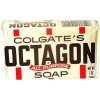This is a post I made in another thread here dealing with hair loss after a while of use, say several months to over a year. It seems quite logical to me and I think it is good to know what is going on inside out brushes:
"I just had sometime ago a brush coming back that was fine for a good time. It had lost a few hairs in the initial uses but was fine for about 6 month without loosing a hair. Then suddenly it started loosing hairs, lots of hairs. I was very curious to find out what has happened, so I asked to have it send to me for replacement of the knot. I cut the hair out carefully and found the inside of the brush was full of soap residues. The owner told me that he rinses his brush well. However, the brush was a larger one, 24 mm silvertip knot with extra hair. I totally understand the effect of soap destroying hair when left inside the brush. This combined with the mechanical stress during use is the reason that some brushes will start shedding after awhile of use, even if the never lost a hair or only a few in the initial use.
Here is a little brochure of Da Vinci Pinsel about their Shaving brushes, please go to page 4 to read up on this:
http://www.davinci-defet.com/files/r...ushes_2012.pdf "
I think this is a good info to have and please, rinse out your brushes well under running warm water!!
"I just had sometime ago a brush coming back that was fine for a good time. It had lost a few hairs in the initial uses but was fine for about 6 month without loosing a hair. Then suddenly it started loosing hairs, lots of hairs. I was very curious to find out what has happened, so I asked to have it send to me for replacement of the knot. I cut the hair out carefully and found the inside of the brush was full of soap residues. The owner told me that he rinses his brush well. However, the brush was a larger one, 24 mm silvertip knot with extra hair. I totally understand the effect of soap destroying hair when left inside the brush. This combined with the mechanical stress during use is the reason that some brushes will start shedding after awhile of use, even if the never lost a hair or only a few in the initial use.
Here is a little brochure of Da Vinci Pinsel about their Shaving brushes, please go to page 4 to read up on this:
http://www.davinci-defet.com/files/r...ushes_2012.pdf "
I think this is a good info to have and please, rinse out your brushes well under running warm water!!



